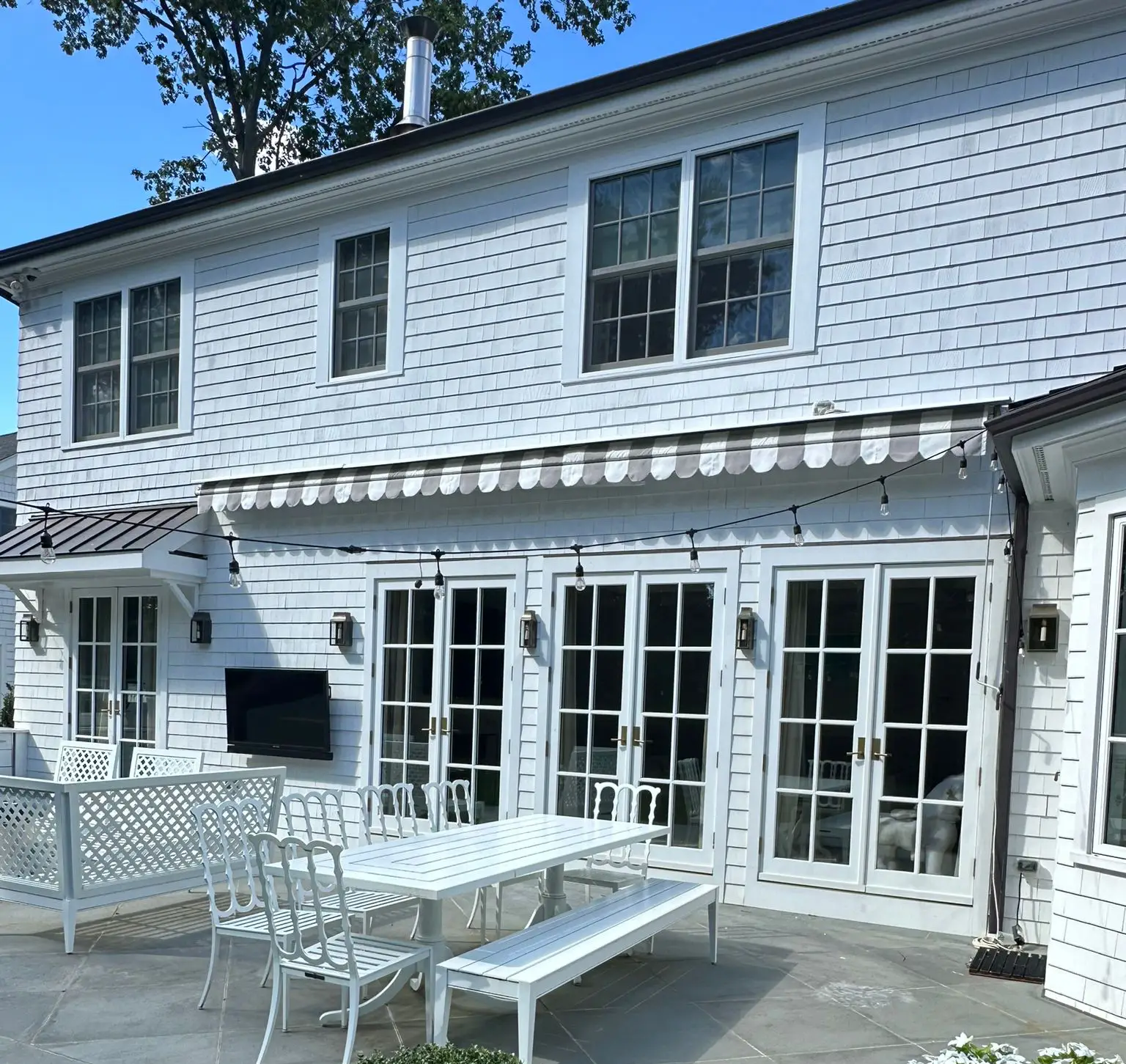Blogs

Can You Mix Interior & Exterior Paint? | Expert Advice
It might seem convenient to mix leftover interior and exterior paints to achieve a specific shade or to use up excess product. However, despite both being "paint," their formulations are fundamentally different, designed for highly specific environments. Mixing them can lead to a host of problems, compromising the finish, durability, and performance of your paint job. Understanding these differences is key to achieving lasting results and avoiding costly mistakes.
Key differences between interior and exterior paint
The distinct challenges posed by indoor and outdoor environments dictate the specialized chemistry of each paint type.
Binders (Resins): This is the most significant difference.
Exterior Paint: Contains more flexible and durable binders (typically acrylic or urethane-modified acrylics). These binders are designed to withstand constant expansion and contraction due to temperature fluctuations, as well as exposure to moisture, UV radiation, and abrasion. They remain flexible even in extreme cold.
Interior Paint: Features binders that are less flexible but tougher for abrasion resistance and washability. They don't need to cope with outdoor weather extremes, so their focus is on resisting scuffs, marks, and frequent cleaning.
Additives: Each paint type contains a unique blend of additives for specific performance characteristics.
Exterior Paint:
UV Resistant Additives: To prevent fading, chalking, and degradation from sunlight.
Mildewcides/Fungicides: To inhibit the growth of mold, mildew, and fungi in damp outdoor conditions.
Adhesion Promoters: For better grip on various exterior surfaces (wood, siding, masonry).
Freeze-Thaw Stabilizers: To prevent damage during temperature cycles.
Interior Paint:
VOC (Volatile Organic Compound) Management: Formulated with lower VOCs for better indoor air quality.
Odor Reducers: To minimize paint odors during and after application.
Scrubbability Enhancers: To withstand repeated washing without damaging the finish.
Stain Blockers: Some interior paints include these to prevent common household stains from bleeding through.
Pigments: While both use pigments for color, exterior paints often incorporate pigments that are more resistant to UV fading.
VOC Levels: Generally, interior paints have lower VOC content to meet indoor air quality standards. Exterior paints, while increasingly low-VOC, may still contain higher levels of certain chemicals necessary for outdoor durability.
Why mixing is not recommended
Given the fundamental differences, mixing interior and exterior paints is strongly advised against. Here's why:
Compromised Durability: The specialized binders and additives in each paint type are carefully balanced for their intended use. Mixing them dilutes these critical components, leading to a "hybrid" paint that performs poorly in both environments.
An exterior surface painted with a mix will lack sufficient flexibility and UV/mildew resistance, leading to premature cracking, peeling, and fading.
An interior surface painted with a mix might be overly flexible, less washable, or emit stronger odors.
Poor Adhesion: The unique adhesion properties of each paint are diminished, potentially causing the mixed paint to not bond properly to any surface.
Inconsistent Finish: Different paint formulations can have varying viscosities and drying times. Mixing them can result in an inconsistent texture, sheen, or color due to uneven blending and curing.
Color Discrepancy: Even if the base colors seem similar, the way the pigments react within the mixed binder system can lead to an unpredictable final color or variations as the paint dries and ages.
Voided Warranties: Paint manufacturers' warranties are specific to their products used as intended. Mixing different paint types will almost certainly void any existing warranties, leaving you responsible for future failures.
Health and Safety Concerns: While not common, certain chemical interactions could potentially occur, leading to unpredictable fumes or application issues. Even without harmful reactions, the increased VOCs from exterior paint being used indoors can negatively affect indoor air quality.
What happens if you mix them anyway?
If you decide to mix interior and exterior paint, you're essentially creating an unpredictable, weakened product.
If used outdoors:
Rapid Deterioration: Expect the paint to chalk, fade, crack, and peel much faster than a proper exterior paint.
Mildew Growth: Without sufficient mildewcides, mold and mildew are likely to develop, especially in damp or shaded areas.
Poor Weather Resistance: The paint will offer inadequate protection against rain, snow, and extreme temperatures, potentially leading to moisture damage on the substrate underneath.
Voided Siding/Substrate Warranty: If the compromised paint leads to damage to the siding itself, the warranty for the siding material might be jeopardized.
If used indoors:
Odor Issues: Exterior paints typically have stronger odors due to higher VOCs and different solvents. These odors can linger indoors for a long time, affecting indoor air quality.
Washability Problems: The paint may not hold up to cleaning as well as a dedicated interior paint, leading to scuffing or removal of the finish.
Finish Inconsistency: The appearance might be uneven or "sticky" to the touch, especially in humid conditions.
Overly Flexible: While flexibility is good for exteriors, it's not a primary requirement indoors, and some exterior additives could impact indoor performance negatively.
In most cases, the resulting paint will simply be subpar, failing to deliver the expected performance for either indoor or outdoor applications, leading to the need for a repaint much sooner than anticipated.
Safe alternatives for versatile paint use
Instead of mixing incompatible paints, consider these safe and effective alternatives:
"Porch & Floor" Paints: These are exterior paints specifically formulated for horizontal surfaces like wood porches, decks, and concrete patios. They are highly durable, often include anti-slip properties, and are designed for heavy foot traffic and full weather exposure. While primarily for floors, their robust nature means they're built for extreme outdoor conditions.
Marine-Grade Paints: For surfaces that experience constant exposure to water (e.g., boat docks, certain exterior elements in very humid or coastal areas), marine-grade paints offer superior water resistance and durability.
Specialty All-Purpose Exterior Paints: Some manufacturers offer exterior paints designed for a broader range of outdoor surfaces, including trim, siding, and even light foot traffic. Always check the label for specific recommendations.
Paint Matching Services: If you have a specific color in mind from an interior paint, take a sample to your paint store. They can color-match it precisely using an exterior paint base. This way, you get the color you want with the correct formulation.
Smaller Quantities of Exterior Paint: If you only need a small amount for a touch-up or a small outdoor project, buy a pint or quart of dedicated exterior paint. This is much more cost-effective than risking a full paint job with a compromised mix.
Repurpose Leftovers: Instead of trying to mix, find appropriate uses for each leftover paint type. Leftover interior paint can be used for small indoor projects, accent walls, or even donated. Leftover exterior paint can be used for outdoor touch-ups, painting outdoor furniture, or utility sheds.
Best practices for each environment
To ensure the best possible outcome and longevity for your painted surfaces, always adhere to these best practices:
Read the Label: The paint can is your primary guide. Always read and follow the manufacturer's instructions for surface preparation, application, temperature ranges, drying times, and recommended uses.
Use Environment-Specific Paints:
For Interiors: Choose paints specifically labeled "interior paint." Consider factors like washability, sheen, low VOCs, and stain resistance based on the room's function.
For Exteriors: Always select paints explicitly labeled "exterior paint." Look for features like UV resistance, mildewcides, flexibility, and suitability for the specific exterior surface (siding, trim, deck, masonry).
Proper Surface Preparation: Regardless of the environment, surface preparation is paramount. This includes cleaning, sanding (if necessary), repairing imperfections, and priming as recommended by the paint manufacturer. A clean, dull, and dry surface is essential for proper paint adhesion.
Apply Multiple Thin Coats: Two thin, even coats of paint always outperform one thick coat. Thin coats dry and cure more thoroughly, provide better adhesion, and are less prone to cracking, peeling, or sagging.
Respect Drying and Curing Times: Allow adequate drying time between coats and before exposing the freshly painted surface to moisture or heavy use. Drying time means it's dry to the touch, while curing time is when the paint has reached its full hardness and durability.
Store Paints Correctly: Store leftover paints in a cool, dry place, away from direct sunlight and freezing temperatures. Ensure cans are tightly sealed to prevent spoilage.
By respecting the distinct formulations of interior and exterior paints and adhering to proper painting practices, you can achieve a professional-quality finish that looks great and lasts for years, protecting your investment.
Ready to ensure your next painting project truly stands the test of time, inside or out? Contact Masterpiece Painter for expert advice and a flawless finish that respects the unique needs of every surface!
About Masterpiece Painter
For over 17 years Masterpiece Painter, has been serving communities all around New England. Let us help you make your wishes come true by turning your property into a Masterpiece
Get a Quote

© copyright 2023 All Rights Reserved.



